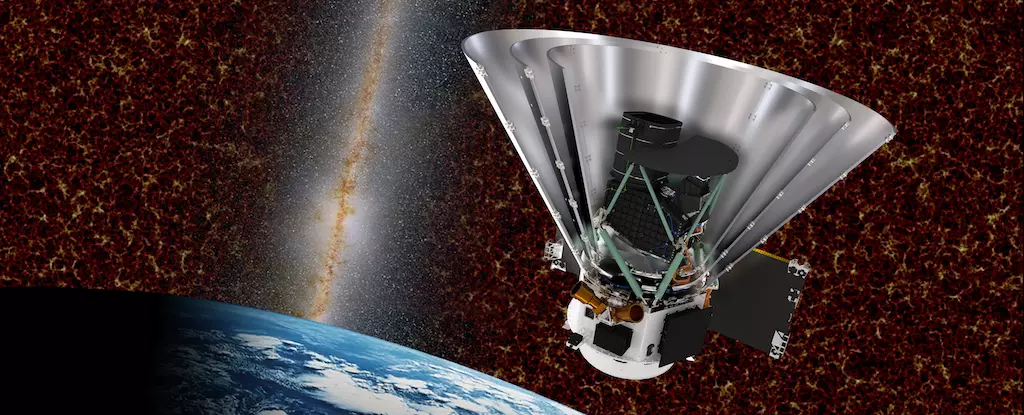NASA is on the brink of launching its groundbreaking mission, SPHEREx, marking the dawn of a new era in astronomical studies with its promise to deliver the most vibrant and comprehensive three-dimensional map of the entire night sky. Set to launch on February 28, the spacecraft will embark on an ambitious two-year journey to survey the sky in unprecedented detail. During this period, it will conduct four comprehensive scans that will analyze every pixel, revealing critical information about various celestial bodies’ composition, distance, and characteristics.
The data gathered will paint a vivid infrared picture in no fewer than 102 colors, vastly surpassing the ability of previous all-sky maps. According to Olivier Doré, an astrophysicist at NASA’s Jet Propulsion Laboratory and the project’s lead scientist, SPHEREx is designed to scrutinize everything across our celestial panorama—from comets in our Solar System to distant galaxies. The potential accumulation of this data set could significantly expand our understanding of the universe, addressing some of humanity’s most profound questions about our existence and the cosmos.
The acronym SPHEREx stands for Spectro-Photometer for the History of the Universe, Epoch of Reionization and Ices Explorer, succinctly summarizing its mission’s essence. SPHEREx aims to accomplish three crucial objectives that delve deep into the cosmic narrative. First, it will seek to reconstruct images of the universe’s appearance mere moments following the Big Bang, providing insights into the early attractive forces that shaped cosmic evolution.
Second, the mission intends to estimate the total light emitted by all galaxies throughout cosmic history, a task that could revolutionize our comprehension of galaxy formation and evolution. Third, it will probe the Milky Way for essential life-supporting elements, such as water and other necessary compounds. The basis of these ambitious objectives relies on light spectrum analysis, where by observing the changes in light wavelengths, scientists can gather information about the distance of celestial phenomena and their velocity concerning Earth.
The envisioned outcome of SPHEREx not only includes a spectacular three-dimensional representation of the cosmos but could also result in a comprehensive cataloging of approximately 450 million galaxies. The density and distribution of these galaxies can provide crucial insights into the early inflationary period post-Big Bang. This epoch is theorized to have resulted in the rapid expansion of the universe, and comprehending how galaxies were positioned during this period can inform various cosmological models.
If data reveals a uniform galaxy distribution across the universe, it may support simpler inflation models, possibly relying on hypothetical particles such as the inflaton. However, a skewed distribution could imply the influence of various unknown factors, urging scientists to rethink their existing models. Furthermore, SPHEREx’s analysis might yield surprising discoveries about the light emitted by galaxies over time, helping to trace back the timeline of cosmic luminosity and its shifts throughout the universe’s multibillion-year history.
On a more terrestrial note, the mission’s exploration could significantly enhance our prospects of finding life beyond Earth. By focusing on the detection of water ice and other key compounds within star-forming molecular clouds, SPHEREx aims to illuminate the conditions that may support life as we know it. Each molecular compound has its unique spectral signature, allowing scientists to deduce its presence by observing background light that passes through these interstellar clouds.
SPHEREx is projected to make over 9 million observations of these critical star-forming regions, collecting valuable 3D data to identify the presence of elements such as carbon dioxide and carbon monoxide—vital components necessary for life. The findings could imply that planets forming in these regions have a higher likelihood of harboring the foundational ingredients for life.
The treasure trove of data expected from SPHEREx will greatly benefit future scientific endeavors, offering a wealth of information that researchers will analyze for years to come. Additionally, collaborations with existing observatories, such as the James Webb Space Telescope (JWST), will strengthen this mission’s impact. As Gary Melnick, an astronomer in the SPHEREx science team, notes, any intriguing locations discovered by SPHEREx can be investigated further by JWST, benefitting from its sharper spectral insight and capability to observe wavelengths beyond the reach of SPHEREx.
Ultimately, the SPHEREx mission stands as a monumental leap forward in humanity’s quest to decode the vast universe, bridging the gap between early post-Big Bang conditions and potential cosmic life. Each data point captured by this mission has the potential to reshape our understanding of the universe and our place within it, unveiling mysteries that have long eluded our grasp.


Leave a Reply